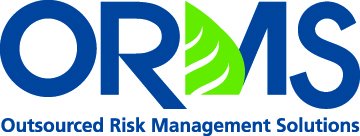SBA Rolls Out Environmental Guidance Changes
Lessons from the Government Shutdown
February 7, 2019Managing Lender’s Risk with Environmental Insurance
May 13, 2019SBA Rolls Out Environmental Guidance Changes
Just 15 months after implementing its last round of changes to its Standard Operating Procedure (SOP 50 10 5), the Small Business Administration (SBA) is at it again. Version K represents the SBA’s eleventh update to the guidance, affecting all CDC/504 and 7(a) commercial lenders. The update will go into effect on April 1, 2019. (No, this is not an April Fool’s Day joke!)
Most of the changes will have minimal impact on lenders’ environment due diligence programs. However, both CDC and 7(A) lenders should be aware of a few important updates to environmental policies and procedures:
- Phase II ESA: Version K adds guidance requiring a lender to seek an exception from the SBA Environmental Committee when an Environmental Professional recommends proceeding directly from a Transaction Screen to a Phase II environmental site assessment, bypassing a Phase I, and the lender agrees. (Subpart B – Section 7(a) Business Loan Programs, Chapter 4, paragraph V.E.4; Subpart C – Section 504 Certified Development Company Loan Program, Chapter 3, paragraph III.E.4)
- Special Use Facilities: The latest SOP update breaks out specific additional environmental assessment requirements for child-occupied facilities, dry cleaners, and gasoline stations into three separate sections. One significant change is that lead risk assessments must now be performed on all child-occupied facilities, regardless of whether they were constructed prior to 1980. Such assessments also must now conform with U.S. EPA and HUD regulations. (Subpart B, Chapter 4, paragraph V.H.; Subpart C, Chapter 3, paragraph III.H.1-3)
We advise all SBA lenders to familiarize yourself fully with the latest version of the SOP, as it also includes updates to areas beyond environmental policies and procedures. Such updates include: revisions to the Final Rule on Debt Refinancing and the addition of a 25-year Debenture in the 504 Loan Program, changes to minimum equity requirements for certain 7(a) loans, and the addition of verbiage pertaining to the eligibility of marijuana-related and hemp-related businesses.
Of special note for 7(a) lenders, version K clarifies that the use of 7(a) loan proceeds to purchase land is only allowed when the land is being purchased as part of an eligible project. For CDCs, in the case of loans with collateral that may be included in the National Register of Historic Places now require a consultation with local SBA counsel.
The SBA’s Information Notice and SOP 50 10 5 (k) are both available online. Lenders may submit comments and questions directly to the SBA at: 7aQuestions@sba.gov or 504Questions@sba.gov.
If you are an SBA lender, we strongly recommend checking with your Environmental Professional to ensure they are aware of the latest SOP updates and are adjusting their reporting and review processes appropriately. As always, feel free to reach out your ORMS environmental experts if you have any questions about the revised SOP or your risk management program.
